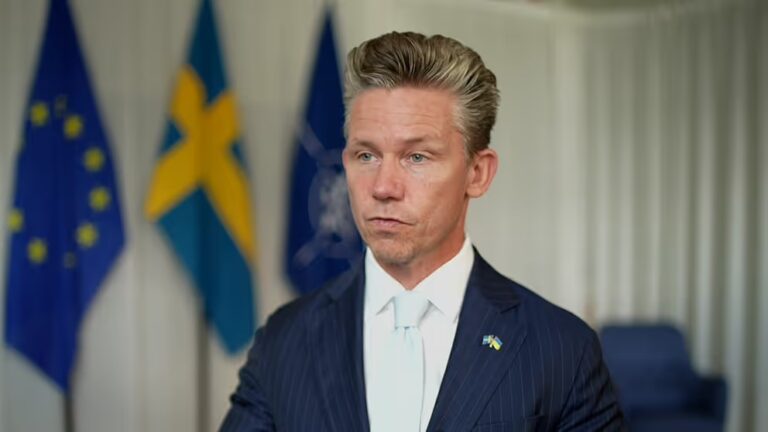NATO logistics base in Sweden will be established in Enköping, central Sweden, after a government decision on 21 August 2025. The base will coordinate troop movements in Northern Europe and across the North Atlantic corridor, with operations expected to begin by late 2027. The move places Sweden at the heart of NATO’s reinforcement plans for the Nordic–Baltic region.
Government decision and timeline to 2027
The Swedish Government instructed the Swedish Armed Forces to offer NATO the establishment of a Joint Logistics Support Group (JLSG) Headquarters in Sweden and to prepare so the unit becomes operational by the end of 2027.
The Minister for Defence (Försvarsministern) Pål Jonson (M) framed the step as part of Sweden’s contribution to NATO’s deterrence and defence posture. In peacetime, around 70 NATO personnel are expected at the Enköping site, with scope to scale up if readiness levels increase.
Why Enköping fits NATO’s logistics needs
Enköping already hosts the Swedish Army Staff (Arméstaben) and sits on key road and rail links between western Scandinavia and the Baltic Sea. Locating the NATO logistics base there leverages existing military infrastructure, reduces lead times, and facilitates integrated planning with Swedish command structures. The base will initially be set up within existing Swedish Armed Forces facilities.
How the Joint Logistics Support Group will work
The JLSG HQ is designed to plan, synchronise and oversee large-scale logistics across allied territories—fuel, ammunition, spare parts, reception, staging and onward movement (RSOM). In a contingency, it is expected to handle division-sized flows (up to ~20,000 troops) and associated materiel.
The Enköping HQ is planned under Joint Force Command (JFC) Norfolk for the Joint Operations Area Northwest (JOA NW), integrating with NATO’s enablement architecture, including the Joint Support and Enabling Command (JSEC) in Ulm.
Strategic routes from North America to the Baltic
Operational planning anticipates reinforcement from North America via Norwegian Atlantic ports, transit across Sweden, and onward movement to Finland and the Baltic States. The Enköping hub will coordinate these flows, improving speed and predictability for allied movements across the Nordic–Baltic corridor and over the Baltic Sea.
Within NATO’s model, permanent JLSG capabilities already support regional operations from Brunssum (Netherlands) and Naples (Italy). The Swedish NATO logistics hub adds a northern node, aligning procedures and standards across commands while tailoring plans to Nordic terrain, climate and infrastructure.
Security and hybrid threats
Swedish authorities emphasise countering sabotage and hybrid threats against logistics nodes and critical infrastructure. Measures include tighter coordination between security and intelligence services, resilience planning for transport networks, and cooperation with allied counter‑hybrid structures to protect supply chains during heightened alert.
Nordic and EU defence implications
The decision consolidates Sweden’s role in the alliance’s northern flank after NATO accession. It complements Sweden’s contributions to forward defence in Latvia and Finland, strengthens Nordic interoperability, and supports EU–NATO coordination on military mobility and infrastructure funding.
Bottom line: establishing a NATO logistics base in Sweden at Enköping formalises the country’s role as the primary northern logistics hub, accelerating reinforcement routes from the North Atlantic to the Baltic and tightening deterrence along NATO’s north‑eastern front.






